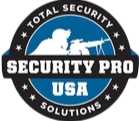
Level IIA (2A)
This is a soft woven vest designed to protect against a 9 mm and a .40 Smith and Wesson. It is lightweight and not as cumbersome as stronger vests. The A indicates it has similar properties to the II rated vest but is slightly weaker.
Level II (2)
This body armor level offers more protection than IIA and can sustain a 9mm at 1245ft/s and a shot from a .357 magnum. This vest is light and easy to conceal, which makes this level vests and IIIA the most popular soft vests.
Level IIIA (3A)
This body armor level is the last of the soft vest. It is slightly heavier and bulkier. IIIA will protect the wearer against 357 sig bullets at 1470 ft/s and .44 Magnum and other .44 caliber rounds at 1430 ft/s. Unlike with 2A, 3A is not a basic replication of level 3 with only a few fewer benefits. 3A is still a soft vest, while 3 goes to hard armor plates. Level 3A seems to be the level that gets alterations the most often. Some do have hard plates for protection against shotgun, 9 mm Civil Defense, and FN 5.7 round
Level III (3)
At level III, the full-body armor moves up to ballistic plates. This hard armor will now protect the wearer from all of the things the previous body armor did plus rifle shots. This level requires the vest to stop 6 shots of 7.62x51mm at 2780 ft/s to pass inspection. This is the equivalent of a .308 Winchester, the weapon frequently used in hunting. Most police forces, SWAT, FBI, and non-combat duty personnel wear this level.
The NIJ does not recognize a + level, but some manufacturers produce vests that they rate as an III+. These are designed to stop every round that all of the previously mentioned levels protect against when shot at higher velocities. The + also indicates protection against M855 and AK 47.
Level IV (4) Level 4 Body armor
Level 4 is the highest in the body armor level ratings. This level can stop armor-piercing rifle shots. It can protect against up to 30-06 MZap steel core armor-piercing rounds with a velocity of 2880 ft/s. This level provides the absolute best in protection, however, it is very heavy and cumbersome. You will be sacrificing flexibility and comfort for the utmost in full body armor. American troops wear level IV in combat.
As mentioned above, these vests constantly undergo testing and updating for the safety of the individuals wearing them. These levels were updated on September 30, 2018, in policy 0101.07.
You must select the level of protection that is appropriate for your individual needs. Share your thoughts for use of the full-body armor with our experts at Security Pro USA, who are well trained to help find the best solution for your needs. They will discuss your needs to help you determine the best vest, plates, and any other supplies that you need. We look forward to helping you protect yourself.

0 comments